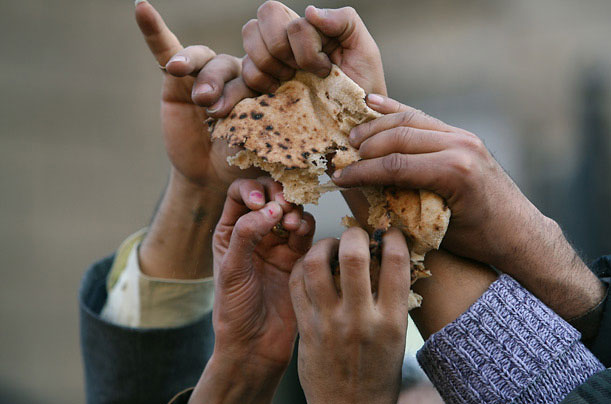Chronic Hunger: Consequence of Impunity of Right to Food Violations

Despite the growth of a worldwide Right to Food movement and the existence of international frameworks and mechanisms to protect human rights, violations are also widespread and continue to go unpunished. In response to this unacceptable pattern, the Right to Food and Nutrition Watch 2011, a consortium of 15 specialized human rights NGOs was formed, including HIC. The Watch has published its annual report in late 2011 with a focus on these violations of the right to food and strategies to ensure accountability. The report identifies accountability as “the missing link” in realizing the human right. The 2011 report addresses the “Accountability Challenge” is a main obstacle to people’s increased recognition of the right to food in political agendas.
The new publication also emphasises the continual violence against agricultural workers who campaign for rights to food, such as the murder of 40 peasants over in eight months were registered as a result of the agrarian conflict in the region Bajo Aguán, Honduras. Articles by recognized experts and defenders of the right to food are assembled as a principal organ of the movement to ensure people’s food security and sovereignty, and a forum for advocacy and strategic exchange.
Link to the 2011 Right to Food and Nutrition Watch report.
The Right to Food and Nutrition Watch contains two sections:
1. The first section addresses how the right to food can be claimed. It includes detailed case studies of vulnerable groups and subjects of discrimination, such as women, suggests indicators for risk monitoring and presents recommendations on how chains of accountability might be established between citizens, governments and donor agencies. This section also reviews progress towards the justiciability of economic, social, and cultural rights. It looks at strategies for addressing barriers to accountability, including effective interventions by peasant movements such as La Via Campesina’s adoption of the Declaration of Rights of Peasants – Women and Men.
2. The second section contains country and regional level case studies that focus on right to food and nutrition accountability. These 15 cases in Europe, Latin America, Africa and Asia provide valuable insight through the circumstances and experiences of communities. In many instances, the Watch brings to light ill-conceived development policies and exploitative practices such as landgrabbing, cash-cropping and financial speculation on agricultural products.
Five key conclusions emerge from this issue of the Watch:
- The existence of a genuine world-wide right to food movement;
- The importance of access to justice for those struggling for their right to food and nutrition;
- An urgent need for increased right to food accountability on the part of state and nonstate actors;
- Recognition of the link between chronic hunger and the impunity of right to food violations;
- The identification of steps to strengthen accountability, namely the leading role of rights holders, the development of frameworks and the formulation of a global civil society agenda to address these issues.
|